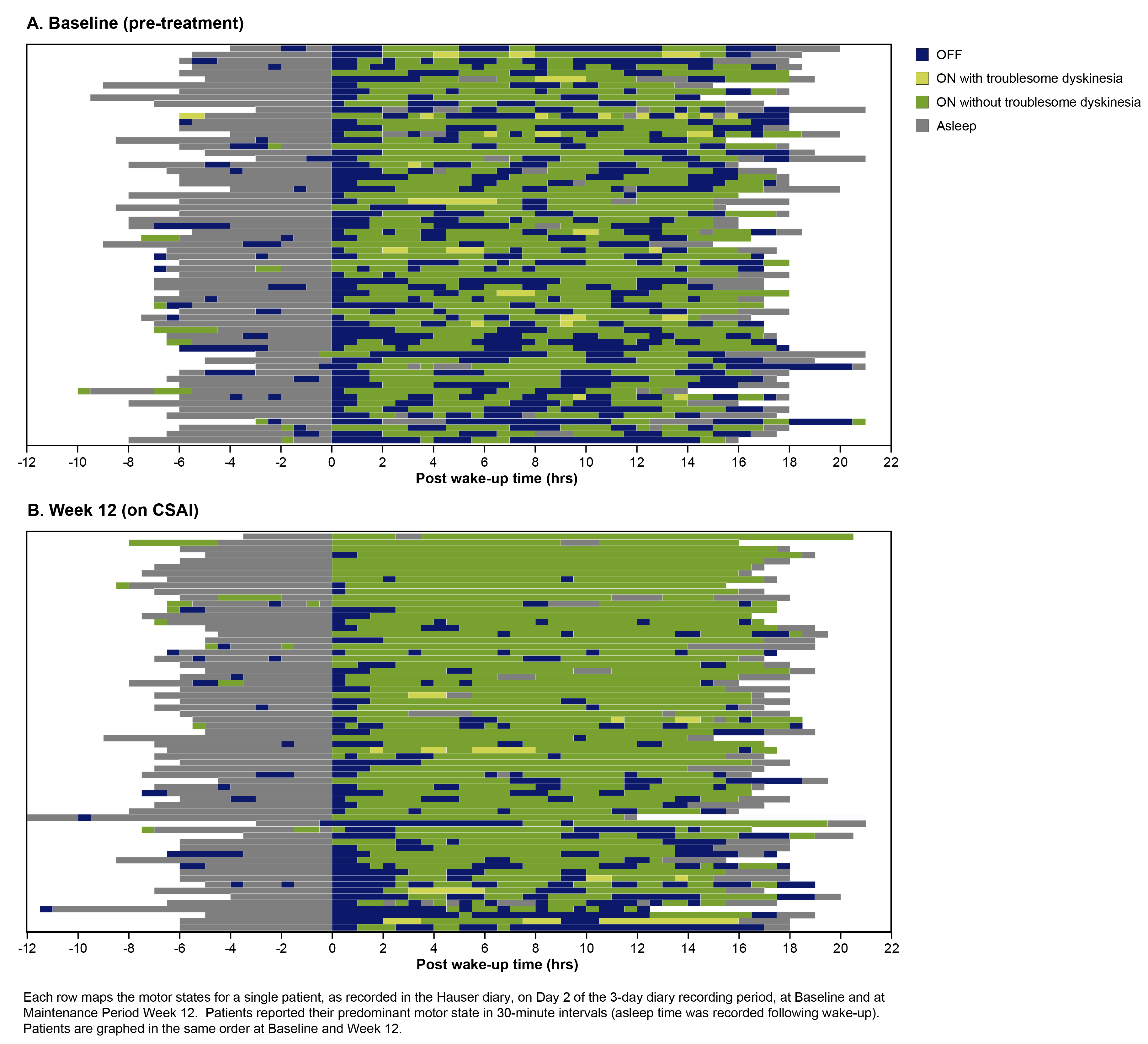Category: Parkinson’s Disease: Clinical Trials
Objective: Evaluate the effect of continuous subcutaneous apomorphine infusion (CSAI) on daily periods of OFF time and Good ON time (ON without troublesome dyskinesia) in people with Parkinson disease (PD) and motor fluctuations as evidenced by patient home diaries.
Background: Previously reported data from the U.S., InfusON Phase 3 open-label study (NCT02339064) showed that, after 12 weeks of maintenance treatment with CSAI, patients’ daily OFF time decreased by a mean of ‑3.0 hours from Baseline (primary efficacy endpoint) with a corresponding increase in Good ON time of +3.1 hours.
Method: The InfusON study enrolled individuals with PD motor fluctuations who were experiencing ≥3 hours of daily OFF time despite optimized antiparkinsonian therapy. Patients were titrated to optimal CSAI rates for best efficacy and minimal adverse events before entering a 52-week Maintenance Period; the primary efficacy endpoint (OFF time) was measured at Week 12 of the Maintenance Period using Hauser PD diaries. In this post hoc analysis, individual patient data were analyzed in heat map format, showing periods of sleep, OFF time, ON time without troublesome dyskinesia (Good ON time), and ON time with troublesome dyskinesia at each 30-minute interval. For each patient diary, the longest period of Good ON time without interruption by OFF time or dyskinesia was also determined.
Results: Of 99 patients enrolled, 65 had evaluable diaries for heat map analysis at both Baseline and Maintenance Period Week 12. The CSAI infusion rate at Week 12 was median (range) 4 (1,7) mg/h. Waking‑hour diary entries showed reduced OFF time for most patients (mean ± SD: ‑3.1 ± 3.16 h from Baseline: 6.6 ± 2.43), with some patients reporting no waking hour OFF time [figure1]. The percent change from Baseline in the number of OFF periods was -40 ± 35.4%. The mean daily longest duration of uninterrupted Good ON time increased from 4.4 ± 2.73 h at Baseline to 9.6 ± 5.80 h at Maintenance Week 12. Despite dyskinesia being a commonly reported AE during CSAI titration, heat map analysis showed fewer patients reporting troublesome dyskinesia at Week 12 (n=6) than at Baseline (n=12).
Conclusion: In this post hoc analysis of InfusON patient diary data, in addition to reducing overall OFF time, CSAI therapy titrated to optimal efficacy reduced patients’ daily number of OFF periods and, on average, more than doubled the amount of uninterrupted Good ON time.
Heat map analysis
To cite this abstract in AMA style:
D. Kremens, R. Hauser, A. Formella, M. Joshi, M. Grall. Improvement in Uninterrupted Good ON Time and Reduction in OFF Periods with CSAI Treatment [abstract]. Mov Disord. 2024; 39 (suppl 1). https://www.mdsabstracts.org/abstract/improvement-in-uninterrupted-good-on-time-and-reduction-in-off-periods-with-csai-treatment/. Accessed December 23, 2025.« Back to 2024 International Congress
MDS Abstracts - https://www.mdsabstracts.org/abstract/improvement-in-uninterrupted-good-on-time-and-reduction-in-off-periods-with-csai-treatment/

